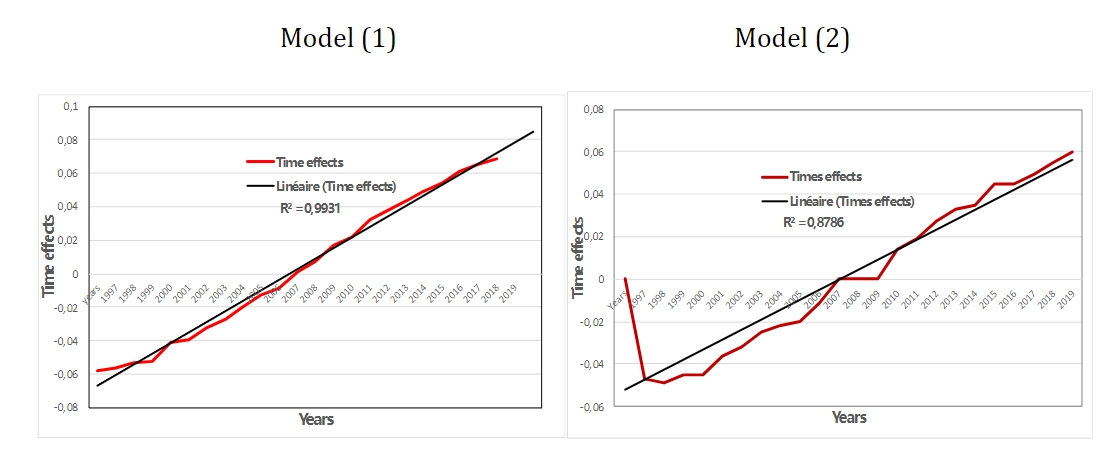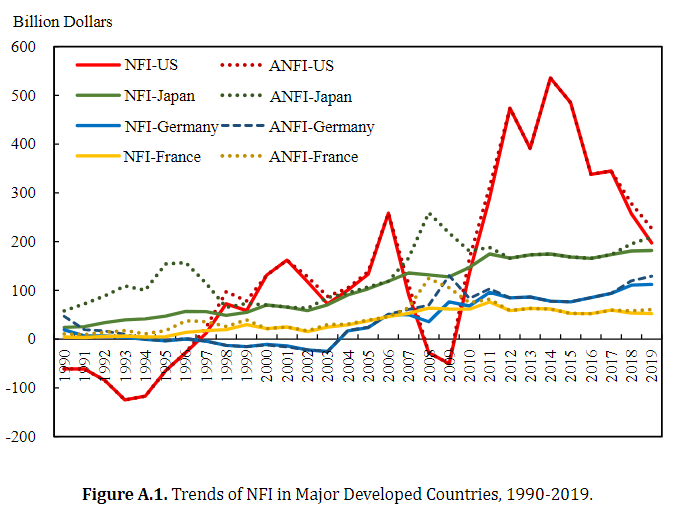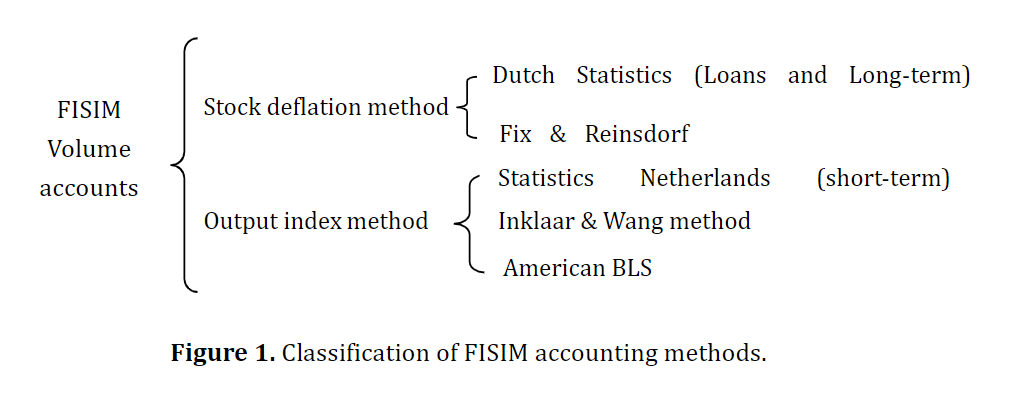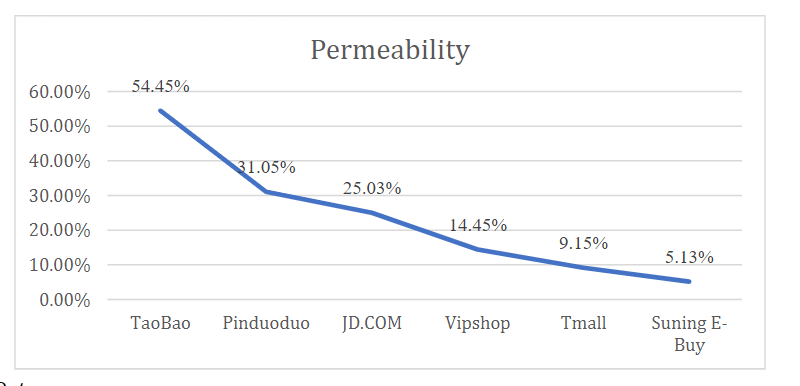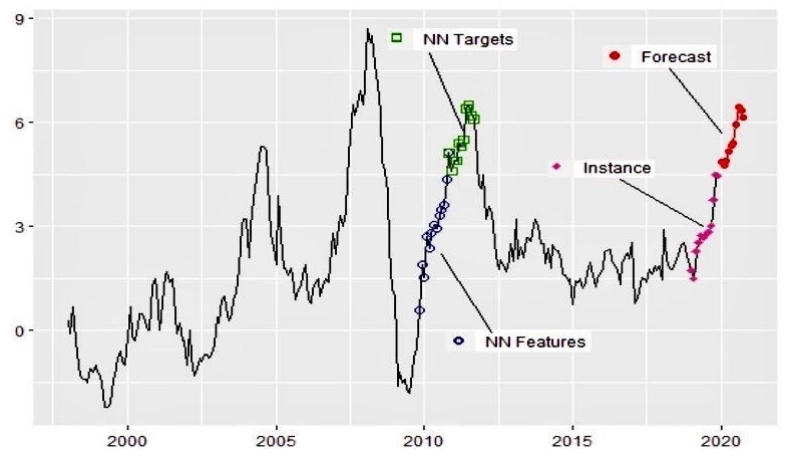Game Analysis on the effect of consumer coupons and its impact on CPI
Abstract
According to economic theory and common sense, the issuance of consumption coupons on one hand stimulated the increasing of residents' consumption, but on the other pushed up the price level. In this paper, using the theory of mechanism design, the game model was built to analyze the relationship between the effect of consumer coupons during the epidemic and the number of merchants participated. The results show that the smaller the merchants’ number, the weaker the coupons’ effect, vice versa. Then, using KNN regression method, combined with the monthly year-on-year data of CPI from 1998 to 2020, this paper analyzes the changes of CPI forecast value and actual value in the first 10 months of 2020, finding that the actual value of CPI is higher than the predicted one during the first two months of 2020, but lower from March 2020 on, which further verifies the conclusion of game analysis.
Cite This Paper
Huang, X., & Yu, P. (2023). Game Analysis on the effect of consumer coupons and its impact on CPI. Journal of Economic Statistics, 1(2), 8. doi:10.58567/jes01020001
Huang, X.; Yu, P. Game Analysis on the effect of consumer coupons and its impact on CPI. Journal of Economic Statistics, 2023, 1, 8. doi:10.58567/jes01020001
Huang X, Yu P. Game Analysis on the effect of consumer coupons and its impact on CPI. Journal of Economic Statistics; 2023, 1(2):8. doi:10.58567/jes01020001
Huang, Xiuhai; Yu, Ping 2023. "Game Analysis on the effect of consumer coupons and its impact on CPI" Journal of Economic Statistics 1, no.2:8. doi:10.58567/jes01020001
Show Figures
Share and Cite
Article Metrics
References
- Ahmad K. (2011). Older adults' social support and its effect on their everyday self-maintenance activities: Findings from the household survey of urban Lahore-Pakistan. South Asian Studies, 26(1), pp. 37–52.
- Benjamin A. E., Fennell M. L. (2007). Putting the consumer first: An introduction and overview. Health Services Research, 42(1p2), pp. 353–61. https://doi.org/10.1111/j.1475-6773.2006.00694.x
- Fernandez N. F., Angeles D. and P. A. Gutierrez. (2018). Time series forecasting by recurrent product unit neural networks. Neural Computing & Applications 29, 779–791. https://doi.org/10.1007/s00521-016-2494-2
- Friedman M. (1973). The voucher idea, New York Times, 23(9), pp. 22–32.
- Greene J., Hibbard J. H. (2012). Why does patient activation matter? An examination of the relationships between patient activation and health-related outcomes. Journal of General Internal Medicine, 27(5), pp. 520–6. https://doi.org/10.1007/s11606-011-1931-2
- Kietzman K. G., Benjamin A. E. (2016).'Whos’ in charge? A review of participant direction in long-term care’. Public Policy & Aging Report, 26(4), pp. 118–22. https://doi.org/10.1093/ppar/prw023
- Laragy C., Allen J. (2015). Community aged care case managers transitioning to consumer directed care: More than procedural change required. Australian Social Work, 68(2), pp. 212–27. https://doi.org/10.1080/0312407X.2014.991337
- Lin Yifu, Shen Yan, sun ang. (2020). The economic effect of Chinese government consumption coupon Policy. Economic research, (7): 4-20.
- Liu Siyi. (2020). Thoughts on Issuing consumption coupons to promote consumption subsidy in the extraordinary period of severe epidemic impact. Consumer economy,36 (3): 13-18.
- Moran N., Arksey H., Glendinning C., Jones K., Netten A., Rabiee P. (2012). Personalisation and carers: Whose rights? Whose benefits?. The British Journal of Social Work, 42(3), pp. 461–79. https://doi.org/10.1093/bjsw/bcr075
- Robert J. H. and G. A. (2014). poulos, Forecasting: Principles and Practice. OTexts.
- Robert R. A., A. F. Atiya and Hisham E.S. (2011). Forecast combinations of computational intelligence and linear models for the NN5 time series forecasting competition. International Journal of Forecasting, 27(3):672-688. https://doi.org/10.1016/j.ijforecast.2010.09.005
- Ruggiano N. (2012). Consumer direction in long-term care policy: Overcoming barriers to promoting older adults' opportunity for self-direction. Journal of Gerontological Social Work, 55(2), pp. 146–59. https://doi.org/10.1080/01634372.2011.638701
- Shi Wenjun. (2010). Research on the "multiplier effect" and "crowding out effect" of consumer coupons -- Taking the operation performance of tourism consumption coupons in Hangzhou as an example. Theoretical observation, 63 (3): 142-143.https://doi.org/10.3969/j.issn.1009-2234.2010.03.063
- Wang Cheng, Jamal Khan. (2020). Leverage design of consumption coupon under financial pressure -- and on the source of funds to stimulate consumption. Financial research, (9): 29-37.
- Xue Jing, Mao chenglian. (2010). Analysis of the effect of issuing consumer coupons on expanding domestic demand. Financial theory and practice, 31 (1): 74-77.
- Zhao Ping. (2020). Issuing consumer vouchers should pay attention to moderate fairness. China Finance, (4):12-18.
